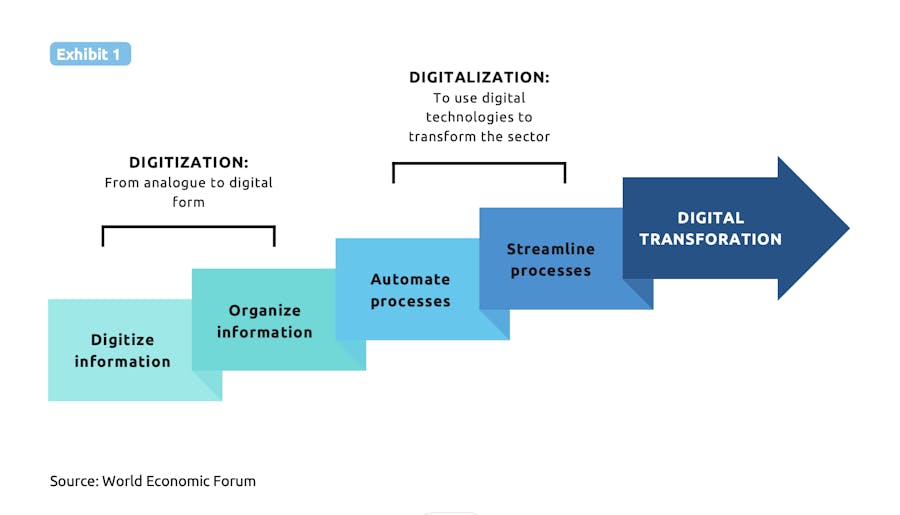Data quality strategy in Salesforce: Transforming the pharmaceutical industry



The pharmaceutical industry regains power after the crisis. Experts predict that technological breakthroughs, macroeconomic changes, and opportunities arising from generational demand will generate a post-pandemic boom worldwide, especially in the United States.
The outlook for the future is positive. A decade ago, the pharmaceutical industry experienced significant consequences as one of the sectors most affected by budget cuts, resulting in restructuring business models and market supply.
“ It's going to be the most exciting 10 years of our lives. There's no question about it. I think it's going to be incredible in terms of the innovation we're going to see. This applies to new drugs and therapies, to advanced manufacturing techniques for cell and gene therapies, and also to continuous processing. ”![Bikash Chatterjee]() Bikash Chatterjee Managing Director, Pharmatech Associates
Bikash Chatterjee Managing Director, Pharmatech Associates
This scenario also responds to a lack of competence. The pandemic has been a stress test for the IT systems around the world. Outdated and fragmented systems and a lack of understanding of the needs of new generations have brought to light the impetuous need to update how the pharmaceutical industry interacts with audiences. As the industry is about to enter a new era of opportunity, both in the short and long term, it is time for industry leaders to review as soon as possible not only the economic schemes of the companies within but also the design of their internal processes, explicitly talking about digital adoption. This applies to the technology and procedures used in labs and the incorporation of Artificial Intelligence in the sector. Online shopping, video call consultations, and new communication channels have driven companies to look for hybrid solutions.
An announced revolution
Technology favors the increase of productivity and competitiveness. Digital intelligence is here to stay. It boosts innovation within companies through numerous digital tools that improve internal organization and customer service—reducing costs, time and effort.
It is necessary to go deeper into the processes and know the difference between digitization and digitalization. Both approaches are needed to offer an excellent customer's service.
While digitization means entering data into the computer using the keyboard, going from analog to digital format, digitalization represents engaging digital platforms to transform operations (Exhibit 1). Many companies within the pharmaceutical sector think they have already made the digital leap when this is not entirely true. Installing software does indeed help the team replace paper with screens, which makes day-to-day tasks practical. However, a company can only achieve full digital adoption by implementing holistic solutions, such as the cloud and its extensions, when interactions between establishments and customers help to enable positive changes in the health information system.

Digital adoption is not easy, but it is vital. Today there are complete solutions that make it easier for companies to go through the transformation. Like everything else, this change takes time, but doing so provides endless benefits. There are already companies that are seeing positive results. A study conducted by Deloitte's Center for Healthcare Solutions in collaboration with the Scottsdale Institute concluded that around 92% of healthcare professionals and institutes achieved better performance thanks to digital transformation. This study involved a survey of technology executives from 25 health systems, interviewing five health system technology leaders and facilitating a moderated panel discussion of technology leaders from three health systems (Exhibit 2).

On the other hand, the consequences of delaying the digital leap are tangible. Customers are opting to leave pharmacies that continue to prioritize face-to-face assistance. As the World Economic Forum expresses, it is impossible to continue using archaic models. "With COVID-19 exposing pre-existing vulnerabilities in many health systems and the value of having quality data available for decision-making, it is time digital health becomes an integral part of health priorities and benefits people in a way that is ethical, safe, secure, reliable, equitable and sustainable."
Industries that listen to complaints and requests from customers and patients are the ones that can expect a promising future. Pharmaceuticals, which offer essential products and services, cannot be left behind. When it comes to the well-being and health of the world's population, companies in the sector must provide immediate and timely assistance. Human talent plays and has played its role, but some tasks need to be executed by artificial intelligence to achieve perfection.
What are the benefits of adopting the cloud?
Both customers and employees of a company benefit from cloud technology. Employees are more likely motivated if they have the right tools to perform. If there is motivation, there is a good result. The attention that customers and suppliers receive reflects this premise. When customers are satisfied with their service and products, they return to the same place. When suppliers have a good communication with the company, they tend to build a stronger relationship. The pharmaceutical company in question, having a healthy income, will opt for a constant updating of its platforms, which will provide its team with a space prone to success. The multiple stages of sales are interconnected. Each element can play for or against, depending on how the company handles it.
Impact at a customer level
Currently, there is a solution to all generational problems. The population has become habituated to consulting everything on the internet and from the comfort of their cell phones. Businesses that do not have digital spaces to offer are not on the map. Customers in the pharmaceutical industry require immediate answers. The industry is linked to sensitive issues by its nature. Customers who need their services go through complicated health situations or are not in the disposition to play around. Pharmaceutical companies that offer direct assistance to the public must consider their customers' comfort. Even this is to be considered a differential factor from competence.
By meeting customer expectations, pharmaceutical companies offer comprehensive, user-friendly platforms. Countless records are captured through them. These can even include the patient's medical history, allowing the pharma to know their health status. The cloud service will enable companies to offer flexibility. Users, for example, can scale services to suit their needs, customize settings, and access cloud services from anywhere with an Internet connection. This option also generates greater reach. The pharmacist goes to the patient, not the other way around.
The databases collect information that facilitates the acquisition of medicines. If no prescription is needed, customers can locate which supplier offers the medication or product they need. They can shop online and deliver it to their doorstep in a matter of clicks. The relationship between pharmacist and customer is not compromised. The customer's space and privacy are respected by not making them go to a store or pharmacy.
In the case of prescription or controlled medications, CRM-type digital platforms allow pharmacies to keep track of individual patients. For example, a patient with attention deficit hyperactivity disorder (ADHD) must purchase medication regularly. Regardless of whether this patient goes to their psychiatrist for appointments, they will need written authorization from the psychiatrist. In the past, they needed this as a physical document. Although this is still a common practice for some nations and particular cases, the model is becoming obsolete for convenience and security. Digital platforms now allow patients to receive these medicines at home (except in exceptional circumstances) without presenting the prescription themselves. This option allows the patient to promptly access their treatment, which even encourages them to continue with it.
Under this premise, even all company areas work hand in hand to offer a first-world service. As concluded in an article dedicated to the healthcare industry on the Salesforce portal (a leading CRM platform):
“ (...) an integrated CRM platform increases efficiency by connecting supply chain, manufacturing, medical affairs, marketing, sales, and patient services. This powers the experience customers expect, the support patients need, the productive tools employees want, and the trust and security that IT is responsible for, all from preferred customer and patient channels. In return, the CRM platform unifies suppliers, patient, and partner information for a complete view of all business actions and actionable insights. ”
It is clear at this point that separating the benefit at the client/patient level is impossible. However, there is a more significant impact behind the scenes. Here are the benefits to consider from digital adoption internally.

Impact at an internal level
End-to-end convenience. Data management platforms allow a company's employees to invest their time and effort in the activities that truly require their attention, leaving systematic issues to artificial intelligence—starting with the cloud, which allows pharmaceutical companies to engage their customers more efficiently and effectively. By being part of the system, companies have access to more suppliers and audiences that understand the language of technology and shared priorities. They also have more tools to communicate easier with the suppliers.
Digital platforms offer specially designed spaces for creating internal databases, which can be customized and operated semi-automatically and automatically. Human talent is, of course, still necessary, but only for those activities that demand a more human touch, such as calling customers, planning, and decision-making. It gives way to hybrid solutions. HCP-like but customizable in-house databases can store millions of data, detect and remove duplicates with Duplicate Check solutions, validate records, and manage bulk data. Good data quality is important. Clean data allows employees to trust the information they have. It enables timely and precise tracking. Companies know the status of every single patient and customer, thus offering what is necessary. Clients and patients perceive transparency and feel listened. Despite the use of AI, pharmacies offer a humanized service, which is warm. An individual's lifestyle can be translated into data, which is shared digitally. Any collaborator who possesses this data will know this individual without the need to have previously spoken to them.
On the other hand, despite the apparent benefits of having a solution that understands the needs of the business, many pharma companies still operate with partial and incompatible systems. Holistic solutions allow different departments within a company to design tailored workflows. Above all, this impacts the customer service level and, therefore, economically.
Workflows allow pharma to build pipelines, consolidating tracking through conversations and interactions with customers/patients, physicians, suppliers, and every agent within the supply chain. Using the sales tools offered by competent platforms allows agents and partners to be more timely with their follow-ups. Trusting everything to human memory is a mistake. These tools enable employees to schedule calls, remember events and important dates, keep track of follow-up, categorize their customers by stages, and keep all their customer information in one place. Everything is in its place.
Companies that still occupy analog or fragmented spaces force their staff to jump from application to application, making it time-consuming to accomplish day-to-day tasks. In addition, much of the valuable information is skewed by misinterpretation or mishandling. When companies work with multiple spaces, they lose alignment. Mainly because, most of the time, these spaces have their own language. It is like using a digital translator to translate a paragraph from Chinese to English. Of course, to some extent, the meaning is lost. Among all the good things, holistic solutions directly attack this problem, such as transliteration, which decodes the script of the addresses for their correct interpretation at an international level.
Optimal data management is not only beneficial for customers and suppliers. The standardization of databases promotes a healthy interconnection between departments. This way, it is possible to use integrations for actions, such as financial integrations (AP), DAAS, ERP, and marketing integrations. There is a bridge between areas. It is easy to share goals since there is a notion of what is happening at a general level. The pharma can customize and give or deny access to different areas, but access is the only thing that divides the team, not the compression and reading of data.

Conclusion
Today's generations do not allow the industry to take a step backward. Pharma companies that want to succeed and expand must adopt holistic solutions that fit the industry and its needs. They need to be objective and focused on adapting to recognized platforms rather than skimping on expenses or experimenting with partial solutions that promise to solve all issues. More than an expense, it is an investment. If the industry is directing budget and resources to medication improvement, it is now up to pharma to update their structures and empower their organizations to make decisions based on data, not opinions.
Suppliers are looking to engage with companies that see the importance of digital adoption. Customers and patients want to purchase products and services from companies that provide fully digital spaces. The world is entering a new era. Pharma companies that do not decide to transform will also choose to fall behind. Leaders must become informed and embrace the digital age, improving the experience at all levels and avoiding staff turnover and opportunity closure.







